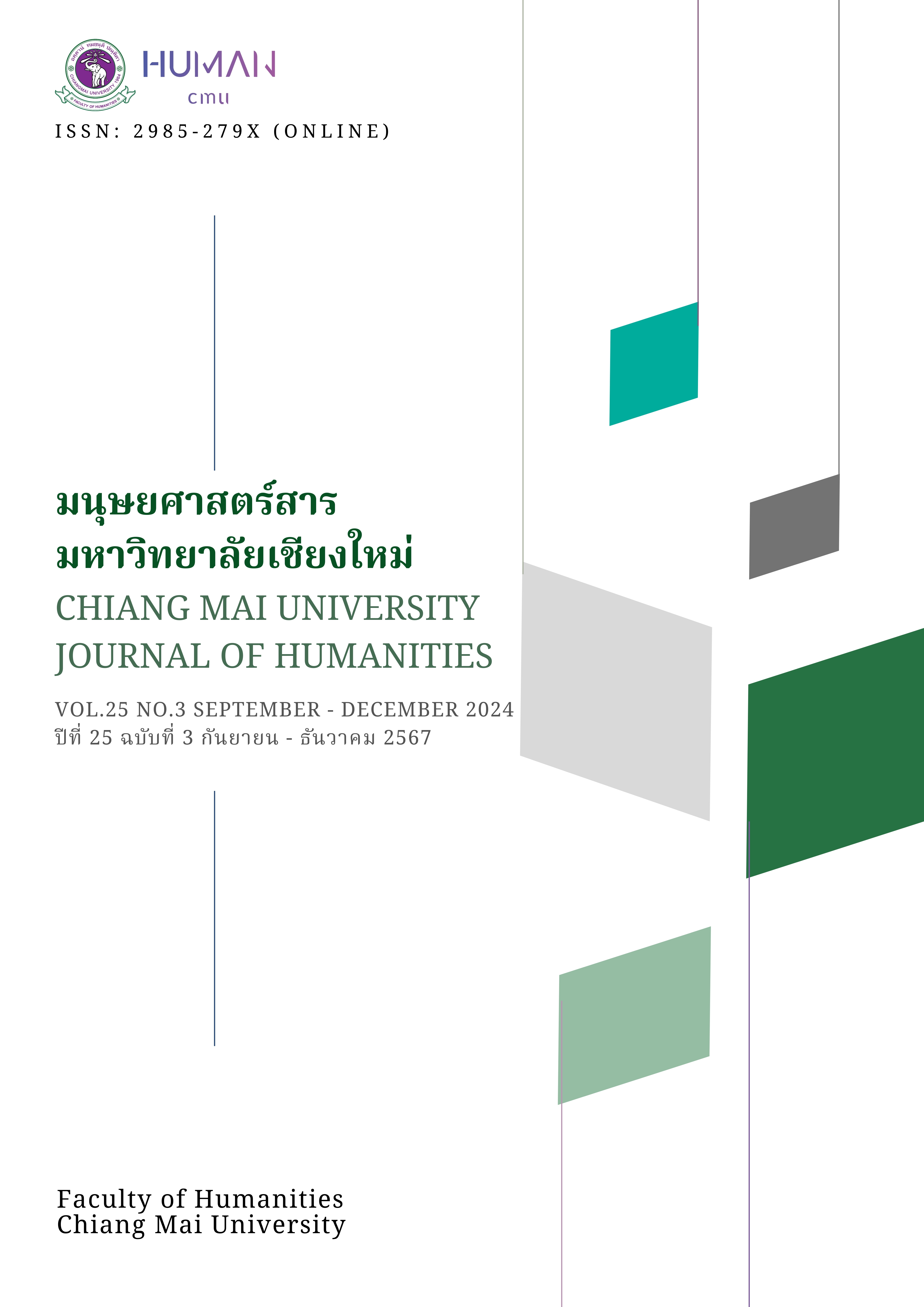การ วิเคราะห์องค์ประกอบเชิงยืนยันของจิตวิญญาณพัฒนากร
Main Article Content
บทคัดย่อ
การวิจัยครั้งนี้มีวัตถุประสงค์เพื่อวิเคราะห์องค์ประกอบเชิงยืนยันของจิตวิญญาณพัฒนากรกับข้อมูลเชิงประจักษ์ กลุ่มตัวอย่างที่ใช้ในการวิจัย คือ พัฒนากรที่สังกัดกรมการพัฒนาชุมชน กระทรวงมหาดไทย ตำแหน่งพัฒนาการอำเภอ และนักวิชาการพัฒนาชุมชน ในระดับอำเภอทั้ง 76 จังหวัดของประเทศไทย โดยใช้การสุ่มตัวอย่างแบบแบบหลายขั้นตอน จำนวน 220 คน เครื่องมือที่ใช้ในการวิจัยเป็นแบบสอบวัดระดับจิตวิญญาณพัฒนากรซึ่งแบบสอบวัดมาตราส่วนประมาณค่า 5 ระดับ ประกอบด้วยคำถามจำนวนทั้งสิ้น 29 ข้อ สถิติที่ใช้ในการวิเคราะห์ข้อมูล ได้แก่ ความถี่ และร้อยละ โดยใช้โปรแกรมวิเคราะห์ทางสถิติและวิเคราะห์องค์ประกอบเชิงยืนยันด้วยโปรแกรม LISREL ผลการวิจัย พบว่า 1) องค์ประกอบจิตวิญญาณพัฒนากร ประกอบด้วย 5 องค์ประกอบ และ 29 ตัวชี้วัด ได้แก่ การมีจิตสาธารณะ 6 ตัวชี้วัด ความเห็นอกเห็นใจ
4 ตัวชี้วัด ความน่าไว้วางใจ 8 ตัวชี้วัด การทำงานเป็นทีม 5 ตัวชี้วัด และ การคิดนอกกรอบ 6 ตัวชี้วัด
2) ผลการวิเคราะห์องค์ประกอบเชิงยืนยัน พบว่า โมเดลที่พัฒนาขึ้นมีความสอดคล้องกลมกลืนกับข้อมูลเชิงประจักษ์
Article Details

อนุญาตภายใต้เงื่อนไข Creative Commons Attribution-NonCommercial-NoDerivatives 4.0 International License.
เอกสารอ้างอิง
กรมการพัฒนาชุมชน กระทรวงมหาดไทย. (2563). รายงานประจำปี 2562 กรมการพัฒนาชุมชน Annual Report 2019. กรมการพัฒนาชุมชน.
ธิปฏพณร์ ยิ้มประเสริฐ, มานพ ชูนิล และ ปิ่นกนก วงศ์ปิ่นเพ็ชร์. (2562). จิตวิญญาณในที่ทำงาน : ปัจจัยสู่ความยึดมั่นผูกพันของพนักงานและสุขภาวะในการทำงาน. มนุษยศาสตร์สาร, 20(3). 46-74.
นิรันดร์ จงวุฒิเวศย์. (2562). กถาพัฒนากร (พิมพ์ครั้งที่ 3). กรมการพัฒนาชุมชน.
พูลพงศ์ สุขสว่าง. (2556). โมเดลสมการโครงสร้าง: Structural Equation Modelling (พิมพ์ครั้งที่ 1).
วัฒนาพานิช.
สถาบันการพัฒนาชุมชน. (2563). รูปแบบการทำงานของพัฒนากรที่ส่งผลให้ชุมชนเข้มแข็ง. กรมการพัฒนาชุมชน กระทรวงมหาดไทย.
สุภมาส อังศุโชติ. (2554). สถิติวิเคราะห์สำหรับการวิจัยทางสังคมศาสตร์และพฤติกรรมศาสตร์ : เทคนิคการใช้โปรแกรม LISREL. เจริญดีมั่นคงการพิมพ์.
สุภางค์ จันทวานิช. (2561). วิธีการวิจัยเชิงคุณภาพ (พิมพ์ครั้งที่ 24). จุฬาลงกรณ์มหาวิทยาลัย.
Abid, M. A., Mohsin, M., Kokab, S., Parveen, A., Ali, Z., & Shoukat, N. (2018). Workplace Spirituality Impact on Job Satisfaction: Mediating Role of Trust. International Journal of Management Sciences and Business Research, 7(1). 104-109.
Alam, M. N., Iqbal, J., Alotaibi, H. S., Nguyen, N. T., Mat, N., & Alsiehemy, A. (2023). Does Workplace Spirituality Foster Employee Ambidexterity? Evidence from IT Employees. Sustainability, 15(11190). 1-18.
Blendinger, J., & McGrath, V. (2000). Thinking Outside the Box: A Self-Teaching Guide for Educational Leaders. College of Education, Mississippi State University.
Cho, Y. J., & Perry, J. L. (2012). Intrinsic Motivation and Employee Attitudes: Role of Managerial Trustworthiness, Goal Directedness, and Extrinsic Reward Expectancy. Rev. Public Pers. Adm, 32. 382–406.
Comrey, A. L., & Lee, H. B. (1992). A First Course in Factor Analysis (2nd ed.). Lawrence Erlbaum.
Daniel Ayala, J. L. (2010). The Effect of Workplace Spirituality on Team Effectiveness. Journal of Management Development. 29. 442-456. 10.1108/02621711011039213.
Denzin, N. (1970). The Research Art in Sociology. Butterworth.
Diamantopoulos, A., & Siguaw, A. D. (2000). Introducing LISREL : A Guide for the Uninitiated.
Sage Publications.
Foster, M., Gilbert, M., Hanson, D., Whitcomb, K., & Graham, C. (2018). Use of Simulation to Develop Teamwork Skills in Prelicensure Nursing Students: An Integrative Review. Nurse Educator. 44(1). 10.1097/NNE.0000000000000616.
Gorsuch, R. L. (1983). Factor analysis. Lawrence Erlbaum Associates.
Gupta, M., & Mikkilineni, S. (2018). Spirituality and employee engagement at work. In D. Satinder, R. Gary, & C. Joanna (eds.) The Palgrave Handbook of Workplace Spirituality and Fulfillment. (pp. 1-17). Cham: Springer International Publishing AG.
Hassan, S., Ansari, N., & Rehman, A. (2023), "Public Service Motivation, Workplace Spirituality and Employee Well-being: A Holistic Approach". Journal of Economic and Administrative Sciences, 39(4). 1027-1043.
Houghton, J. D., Neck, C. P., & Krishnakumar, S. (2016). The What, Why, and How of Spirituality in the Workplace Revisited: A 14-year Update and Extension. Journal of Management, Spirituality & Religion, 13(3). 177–205.
Jackson, D., Gillaspy, A., & Purc-Stephenson, R. (2009). Reporting Practices in Confirmatory Factor Analysis: An Overview and Some Recommendations. Psychological methods, 14(1). 6-23.
Jones, S. H. (2010). The Interview in Qualitative Research. In Forrester, M.A. (Ed) Doing Qualitative Research in Psychology. (pp. 77-97). Thousand Oaks, Sage Publications.
Joshi, P., & Jain, A. (2016). What Makes a Workplace Spiritual: A Conceptual Framework Describing Antecedents and Outcomes of Workplace Spirituality. Purusharta, 9. 98-105.
Kale, S. H., & Shrivastava, S. (2003). The Enneagram System for Enhancing Workplace Spirituality. The Journal of Management Development, 22(4). 308-328.
Kampan, A. (2016). A Study of Factor Analysis of Public Consciousness of University Students in Bangkok [การศึกษาองค์ประกอบจิตสาธารณะของนิสิตนักศึกษาในสถาบันอุดมศึกษาในเขตกรุงเทพมหานคร] (Doctor of education degree in higher education thesis, Srinakharinwirot University).
Khalaaf, D. A., Elsayed, S. M., & Saad Soliman Saad, E. (2022). Workplace Spirituality and Its Influence on Staff Nurses’ Motivation and Team Effectiveness. Egyptian Journal of Health Care, 13(2). 2097-2108. doi: 10.21608/ejhc.2022.286167
Kharouf, H., Lund, D., & Sekhon, H. (2014). Building Trust by Signaling Trustworthiness in Service Retail. Journal of Services Marketing, 28. doi: 10.1108/JSM-01-2013-0005.
Kvale, S. (1996). Interview Views: An Introduction to Qualitative Research Interviewing. Thousand Oaks, Sage Publications.
Lyons, E., & Coyle, A. (Eds.). (2007). Analysing Qualitative Data in Psychology. Sage Publications Ltd.
Marques, J. (2007). The Reciprocity between Spirituality in the Workplace and Thinking Outside the Box. Business Renaissance Quarterly, 2, 93 - 117.
Marques, J., Dhiman, S., & King, R. (2005). Spirituality in the Workplace: Developing an Integral Model and a Comprehensive Definition. The Journal of American Academy of Business, Cambridge, 7(1), 81-91.
Ozdemir, S., Palframan, J. T., Sever, M., & Agcasulu, H. (2022). Workplace Spirituality as a Mediator Between Organizational Trust and Thriving at Work. Vision, 0(0).
Petchsawang, P. & Duchon, D. (2012). Workplace Spirituality, Meditation, and Work Performance. Journal of Management, Spirituality & Religion, 9, 1-20.
Pulungan, M., & Martdianty, F. (2024). The Effects of Workplace Spirituality Toward Public Service Motivation with Employee Well-Being, Organizational Identification, and Workforce Agility as Mediating Variable. AEBMR, 255, 1496–1507.
Rathee, R., & Rajain, P. (2020). Workplace Spirituality: A Comparative Study of Various Models. Jindal Journal of Business Research, 9(1), 27–40.
Sapra, J., & Mathur, I. (2020). Effect of Dimensions of Workplace Spiritualism: Meaningful Work, Sense of Community, Organizational Values and Compassion with Reference to Job Satisfaction. Electronic Journal of Education, Social Economics and Technology, 1, 10-17.
Sorakraikitikul, M. & Siengthai, S. (2013). Workplace Spirituality: The Challenge for Human Resource Management]. Huachiew Chalermprakiet Academic Journal, 16(32), 129-140.
Stachowska, S., & Czaplicka-Kozłowska, I. Z. (2017). Motivating Employees of the Public Organization: Case Study of the Higher Education Institution. Management Theory and Studies for Rural Business and Infrastructure Development, 39(1), 100-111.
Vandenabeele, W. (2007). Toward a Public Administration Theory of Public Service Motivation: An Institutional Approach. Public Management Review, 9(4), 545-556.
Zaidi, H., Ghayas, M. M., & Durrani T. I. K. (2019). Impact of Work Place Spirituality on Job Satisfaction. RADS Journal of Business Management, 1(1), 49-57.


